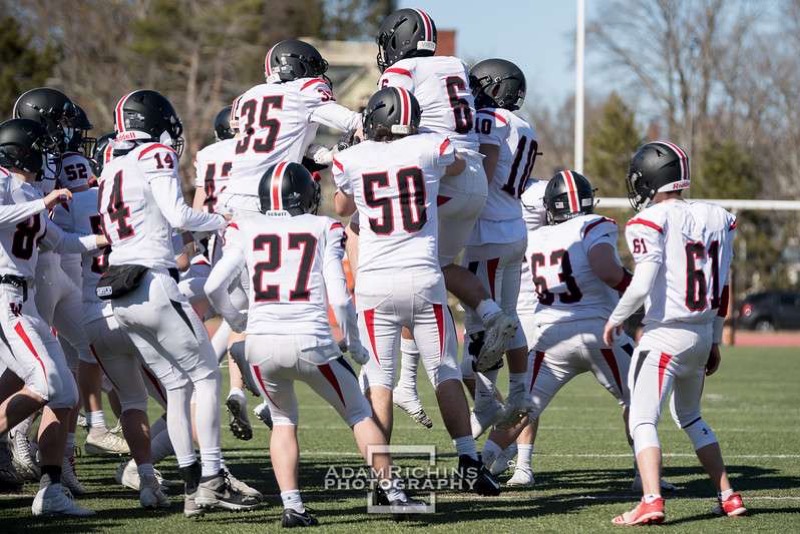Fall II Sports, consisting of indoor track, football, cheerleading, and girls’ volleyball have been set to run from February 22 to April 25. Originally moved from the normal fall season due to concerns about close contact between players, the season is planned to begin with new guidelines adapted from previous seasons.
Similar to the guidelines set by Massachusetts Interscholastic Athletic Association (MIAA) during the Fall I season, players and coaches must continue to adhere to social distancing guidelines like mask wearing, six-feet distancing, and staggered practice times.
However, despite the restrictions, coaches and players are grateful that the season will happen. Jesse Davis, head coach of the high school’s varsity football team is ready to face the challenges of a socially distanced season.
“I am grateful and thrilled that we are getting an opportunity to play this year. Not playing in the fall has greatly impacted the players,” said Davis. “Football is very important to our players, and this program is special to them. They work very hard throughout the year to prepare themselves to play and are passionate about being a part of the team and this program.”
Football regulations limit full-contact drills to only thirty minutes per week, or 45 minutes in a week without a scheduled game. Team timeouts have also been extended to two minutes, and halftime adjusted to be ten minutes, so that teams have time to address player needs and injuries without being rushed.
“Yes, of course it [adapting to regulations] will be difficult, but we will do whatever we have to do in order to give the players the best possible Fall II season experience we can.” said Davis.
For girls’ volleyball, guidelines were recently adapted to remove the ‘COVID Line’, a line three feet from the net on both sides. Players were restricted from attacking the ball when it was above net height in zone. The line was previously observed to preserve social distancing between teams, but has since been removed due to difficulties in judging and maintaining the line. However, MIAA rules continue to mandate the limit of fifteen players per team, and staggered practice times.
“I’m excited to get to play with my teammates again, because with clubs, we all kind of split off. So it’s not the same dynamic,” says Jocelyn Li ’23.
In cheerleading, MIAA guidelines limited stunt groups, or cohorts, to no more than ten athletes. During games, up to twenty cheerleaders are allowed, and stunt groups must be positioned twenty feet apart from each other. In addition, twisting, inversions, and pyramids have been barred, and all other stunts must account for mask wearing.
For both boys’ and girls’ indoor track, many protocols affect the way that meets are conducted. For sprints and hurdles, start blocks are prohibited and athletes are required to line up in every other lane. Other regulations include the sanitation of equipment between uses, and staggering the position of athletes at the start of each race to account for social distancing regulations.
Maintaining social distancing among players will be a difficult task that will take the combined efforts of everyone involved.
“We can tell kids to not congregate until we’re blue in the face. And it’ll just keep happening because that’s just the nature of how teams work,” said Fabian Ardila, coach of the high school girl’s volleyball team. “And we do it and we do it over and over and over again. And you’ll find that at every school, not just at Wellesley or anywhere specific, every school is contending with the same situation.”
With the addition of these rules, safety continues to be the number one priority of coaches and staff.
The most important thing we can do right now is to make sure we’re following the guidelines and keeping people safe,” said John Brown, the athletics director at the high school. “Because if you’re not keeping people safe, what are you doing playing sports? As we always say, it’s a privilege to be able to play sports, right now even more so.”
Although COVID has thrown obstacles in the way of the high school’s sports teams, players and coaches continue to readjust themselves to allow the new season to happen.
“The players and coaches are mentally tough. We want to get out there ASAP, and we will adapt, improvise, and overcome any obstacle we have to face. We won’t take a minute out there for granted and everyday is a chance to get better. It is not a ‘we have to follow the guidelines so we can play’ mentality, it’s a ‘we get to follow the guidelines so we can play’ mentality.” says Davis.

